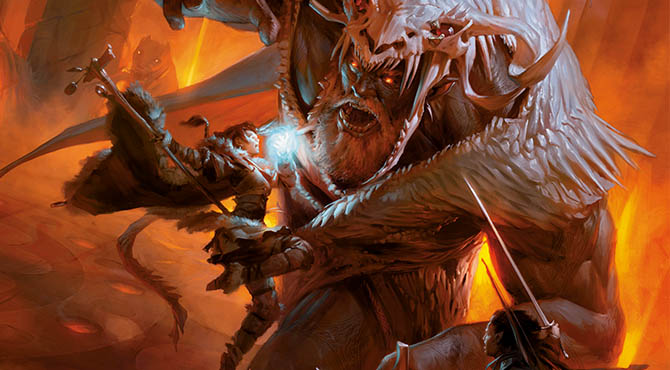“Wizards took a gamble waiving its IP rights in Dungeons & Dragons (D&D) and was rewarded with a huge success. The D&D community is passionate about the game. After two decades under Open Game License (OGL) 1.0, it is not surprising that there were protests against the new OGL”
In 2000, Wizards of the Coast (“Wizards”), the creators of Dungeons & Dragons (D&D), faced a red pill or blue pill scenario. On the one hand, Wizards could continue to develop its Dungeons & Dragons game, while carefully preserving its intellectual property (IP) rights. On the other hand, Wizards could risk or even waive its intellectual property rights by allowing third parties, especially the players, to use the Dungeons & Dragons’ intellectual property for their own creations with few limitations, allowing its players to help expand the D&D franchise.
Wizards chose the second option – to limit its claims over its intellectual property and allow third parties to create their own custom D&D content. A Dungeons & Dragons empire was born. Twenty-three years later, we examine Wizards’ choice and its impact.
In early January of this year, the gaming industry was outraged over a leaked document published by pop culture news outlet io9. The document was a draft of the most recent version of Wizards’ Open Game License, or OGL. But what is an OGL, and why did it have game developers and publishers hastily reaching for their metaphorical swords?
The Original OGL
In 2000, Wizards executed OGL 1.0, which allowed third parties to freely use authorized portions of D&D’s gaming system and settings to create their own D&D-based content. Under this original OGL, gaming developers and publishers could publish unofficial D&D materials, including unofficial adventures, settings, player options and more. TheGamer, a gaming news site, explained OGLs as “[A]n open-source code made by somebody else to program your own original video game . . . .”
Wizard’s OGL 1.0 seemed to make D&D’s gaming system IP free for all to use. The language of the agreement provided few restrictions for third parties that published D&D content. The OGL granted a “perpetual, worldwide, non-exclusive license” to the Open Game Content, or more commonly known as the System Resource Document, and allowed all OGL licensees to “copy, modify and distribute any Open Game Content originally distributed under any version of this License.”
With virtually unobstructed access to D&D’s IP, third-party designers and developers amassed their own D&D materials for gamers to use and even purchase, either as separate role-playing games or as supplemental game materials for official D&D materials. Large publishers that have utilized the OGL in their own business models include Paizo, Kobold Press, and Green Ronin, effectively contributing to D&D’s fame over the years. In doing so, however, these large publishers have incidentally become some of Wizards’ greatest competitors.
The Rise of the New OGL
After years of following the original OGL, Wizards attempted to pull back on the liberal access third parties had to its intellectual property. As the leaked document states, “[T]he Open Game License was always intended to allow the community to help grow D&D and expand it creatively. It wasn’t intended to subsidize major competitors . . . .” According to the leaked document, Wizards was prepared to issue a new OGL. Under the new OGL, those who create D&D content or materials would be much more restricted than under the original OGL 1.0.
Under the new OGL, licensees would be required to report any and all materials to Wizards who would then have the perpetual and irrevocable right to use any of the reported content. Also, the new OGL would reverse its old policy of not charging a royalty on third-party use of D&D material. Any developer or publisher making $750,000 or more from sales of its content would have to pay Wizards a 20-25% royalty fee. Additionally, the new OGL would only allow the creation of new materials for “roleplaying games and supplements in printed media and static electronic file formats.” It would not allow the creation of anything else, “including but not limited to things like videos, virtual tabletops or VTT campaigns, computer games, novels, apps, graphic novels, music, songs, dances, and pantomimes.” For such unauthorized creations, creators would have to come to an individual and custom agreement with Wizards.
The Fall of the New OGL
The backlash came swiftly. Loyal D&D players, content creators, and third-party publishers took to the Internet to voice their concerns over the new OGL. Prominent game publishers even announced plans to cease all content creations under the new license and to focus more resources on their own original gaming systems.
Wizard’s initial response to the backlash was to issue a statement on January 13 that it intended to remove some of the most controversial elements of the new proposed OGL. The final draft would allegedly remove the royalty provision or the license back language that would give Wizards the right to use unofficial D&D materials as its own. At that moment, Wizards was prepared to ensure that the next OGL contain “provisions that allow us to protect and cultivate the inclusive environment we are trying to build” and to address the risk of others claiming that Wizards allegedly stole third-party material that are coincidentally similar.
Following the statement, Wizards conducted a survey to gauge consumer feedback about the new OGL. After 15,000 responses, the consensus was that people did not like it . By the end of January, Kyle Brink, Dungeons and Dragons executive producer, tweeted a personal message confirming that the fans’ voices were heard. Not only was the new OGL scrapped completely, but also the most updated version of the original OGL would remain.
Key Takeaways for Business Owners
Wizards took a gamble waiving its IP rights in D&D and was rewarded with huge success. The D&D community is passionate about the game. After two decades under OGL 1.0, it is not surprising that there were protests against the new OGL. Wizards listened to the people and their complaints. For other companies, allowing liberal access to their intellectual property might not be the savviest course of action. As technology continues to evolve quickly, like the recent boom in artificial intelligence, there is no telling what kinds of challenges intellectual property owners may face. However, it is undeniable that Wizard’s success in some part is due to the open access third parties had to the D&D intellectual property.
Whether this story is a cautionary tale or an epic fantasy to mimic is a question that business owners—in the gaming industry and beyond—must decide for themselves.

![[IPWatchdog Logo]](https://ipwatchdog.com/wp-content/themes/IPWatchdog%20-%202023/assets/images/temp/logo-small@2x.png)



![[Advertisement]](https://ipwatchdog.com/wp-content/uploads/2024/04/UnitedLex-May-2-2024-sidebar-700x500-1.jpg)
![[Advertisement]](https://ipwatchdog.com/wp-content/uploads/2024/05/Quartz-IP-May-9-2024-sidebar-700x500-1.jpg)
![[Advertisement]](https://ipwatchdog.com/wp-content/uploads/2024/04/Patent-Litigation-Masters-2024-sidebar-700x500-1.jpg)

![[Advertisement]](https://ipwatchdog.com/wp-content/uploads/2021/12/WEBINAR-336-x-280-px.png)
![[Advertisement]](https://ipwatchdog.com/wp-content/uploads/2021/12/2021-Patent-Practice-on-Demand-recorded-Feb-2021-336-x-280.jpg)
![[Advertisement]](https://ipwatchdog.com/wp-content/uploads/2021/12/Ad-4-The-Invent-Patent-System™.png)







Join the Discussion
No comments yet.